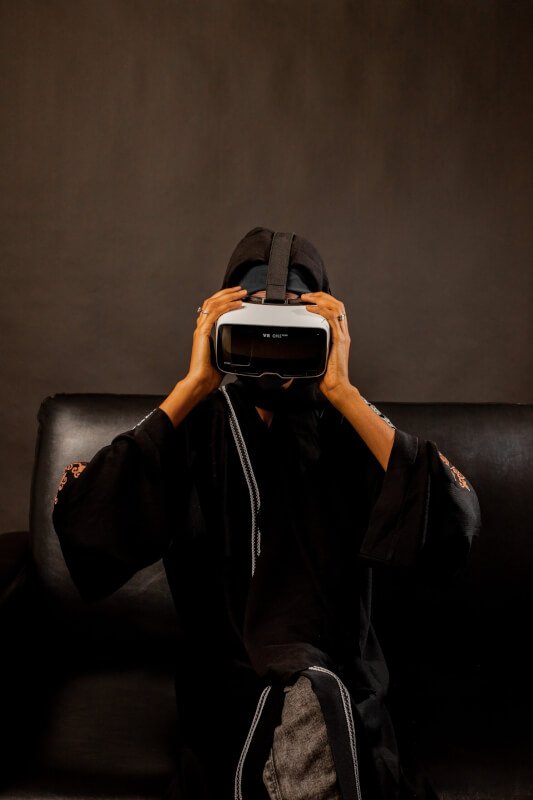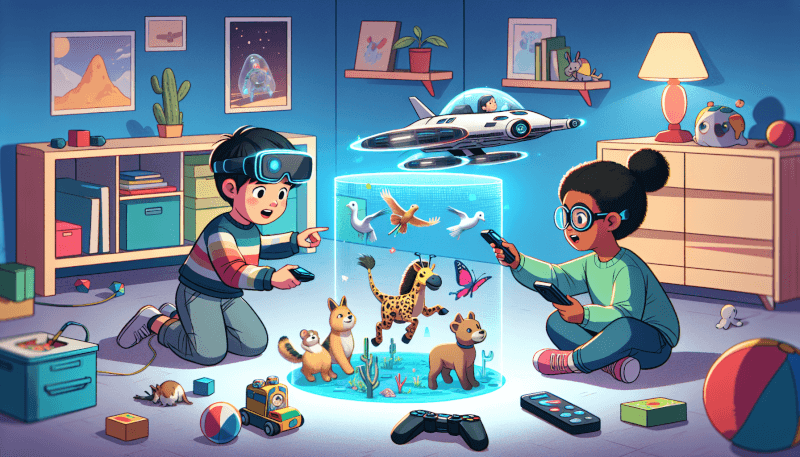Have you ever wondered what augmented reality (AR) is in the context of smart toys? Well, you’re in for a treat! In this article, we will explore the fascinating world of AR in smart toys and uncover how this innovative technology is revolutionizing the way children play and learn. Get ready to be amazed as we take a closer look at how AR brings toys to life, engaging young minds in a whole new dimension of interactive and immersive play. So, fasten your seatbelts and join us on this exciting journey into the realm of AR in smart toys!
What Is Augmented Reality (AR) In Smart Toys?

Definition and Explanation of Augmented Reality
Augmented Reality (AR) in smart toys refers to the integration of digital elements into the real-world environment of a toy, enhancing the overall play experience. It involves using technology to overlay computer-generated graphics, sounds, and other sensory enhancements onto the physical toys or the environment in which they are being used. By blending the virtual and physical worlds, AR in smart toys creates an interactive and immersive play experience that can captivate children and adults alike.
Integration of Augmented Reality into Smart Toys
The integration of augmented reality into smart toys involves combining traditional toys with cutting-edge technology. Through the use of sensors, cameras, and mobile device applications, smart toys are able to recognize their surroundings and interact with the augmented reality content. This integration allows for seamless interactions between the physical toy and the digital world, providing users with a unique and engaging play experience.

Benefits of Augmented Reality in Smart Toys
Augmented reality in smart toys offers numerous benefits for both children and adults. Firstly, it enhances imaginative play by providing additional layers of storytelling and creativity. Children can bring their toys to life and explore interactive digital worlds, fostering their imagination and cognitive development. Additionally, AR in smart toys promotes learning and educational experiences. Interactive AR games can teach children various skills, such as problem-solving, critical thinking, and spatial awareness.
Moreover, augmented reality in smart toys encourages social interaction and collaboration. Multiplayer AR games allow children to engage with their friends or family members, promoting teamwork and communication skills. It also provides an opportunity for parents to join in the fun and bond with their children. Furthermore, AR in smart toys has the potential to make learning more accessible and inclusive. By customizing the content to individual needs and preferences, children with special needs can benefit from augmented reality experiences tailored to their abilities.
Various Applications of Augmented Reality in Smart Toys
The applications of augmented reality in smart toys are vast and diverse. One common application is the enhancement of traditional toys with digital features. For example, a doll may have augmented reality capabilities that allow it to interact with a smartphone app, bringing the doll to life and enabling interactive play. Another application is the use of augmented reality to create immersive gaming experiences. By overlaying virtual objects or characters onto a physical game board, children can engage in exciting and interactive gameplay.
Augmented reality can also be utilized in educational toys to make learning more engaging and interactive. For instance, a geography puzzle can come to life through augmented reality, with animated depictions of different countries or landmarks appearing when the puzzle is completed correctly. Additionally, augmented reality can be applied to construction toys, allowing children to visualize and manipulate 3D models of their creations in real-time.

Examples of Smart Toys Utilizing Augmented Reality
There are numerous smart toys on the market that incorporate augmented reality. One popular example is the “LEGO AR Playgrounds” app, which brings physical LEGO sets to life through augmented reality. Children can see their LEGO creations come alive on their smartphone or tablet, interacting with animated characters and completing challenges. Another example is the “Hot Wheels Augmoto” racing set, which combines physical racetracks with augmented reality gameplay. By using a mobile device, players can control virtual cars and compete against friends or AI opponents on the track.
The “Osmo” gaming system is another notable example of smart toys utilizing augmented reality. With various game sets, children can engage in interactive learning experiences, such as solving math problems or exploring physics concepts, through the integration of physical objects and augmented reality interactions. These examples demonstrate the exciting potential of augmented reality in enhancing the play value and learning opportunities of smart toys.
Challenges and Limitations of Augmented Reality in Smart Toys
While the integration of augmented reality into smart toys brings many benefits, there are also challenges and limitations to consider. One challenge is the need for robust and reliable technology. Augmented reality experiences require high-performance sensors, cameras, and processing power, which may not always be readily available in all smart toy devices. Furthermore, the development and maintenance of AR software and applications can be complex and costly for toy manufacturers.
Another limitation is the potential for reduced physical play. As augmented reality becomes more prevalent in smart toys, there is a concern that children may become overly reliant on screen-based interactions, neglecting the benefits of hands-on, tactile play. Striking the right balance between virtual and physical play is crucial to ensure a well-rounded play experience.

Safety and Privacy Concerns of Augmented Reality in Smart Toys
With the integration of augmented reality into smart toys, safety and privacy concerns also arise. Manufacturers must prioritize the security of their augmented reality systems to ensure that children are not exposed to harmful content or cyber threats. Additionally, as smart toys often require the use of cameras or sensors, there is a need to address privacy concerns related to data collection and usage. Toy manufacturers must implement stringent privacy policies and provide clear information to parents regarding data handling practices to alleviate these concerns.
Parents also play a vital role in ensuring the safe and responsible use of augmented reality smart toys. They should monitor their children’s interactions, set appropriate screen time limits, and explain the importance of online safety and privacy. By fostering open communication and educating children about responsible technology use, the potential risks associated with augmented reality in smart toys can be minimized.
Future Potential and Innovation of Augmented Reality in Smart Toys
The future of augmented reality in smart toys holds tremendous potential for further innovation and advancement. As technology continues to evolve, smart toys can become more sophisticated in their augmented reality capabilities. This could include improved object recognition, more realistic virtual interactions, and advanced AI integration.
Furthermore, the integration of augmented reality with other emerging technologies, such as artificial intelligence, machine learning, and Internet of Things (IoT), can further enhance the play experiences offered by smart toys. For example, toys equipped with IoT sensors could interact with augmented reality environments in real-time, creating dynamic and personalized play experiences.
Comparison of Augmented Reality with Other Technologies in Smart Toys
When comparing augmented reality with other technologies in smart toys, each has its unique advantages and applications. Virtual reality (VR), for instance, provides a fully immersive and virtual experience, often requiring a headset or goggles. Augmented reality, on the other hand, allows for the blending of virtual and physical worlds, maintaining the user’s awareness of their surroundings.
Additionally, interactive screens and touch-based interfaces have been prevalent in smart toys for many years. While these technologies offer a level of interactivity, they may lack the realism and immersion provided by augmented reality. The inclusion of augmented reality in smart toys adds a new dimension to play, combining physical and digital elements to create a truly engaging and interactive experience.
Conclusion and Final Thoughts
Augmented reality in smart toys is revolutionizing the way children play and learn. By merging the physical and digital realms, augmented reality enhances imaginative play, promotes learning and social interaction, and offers diverse applications in various toy categories. While challenges and limitations remain, such as ensuring robust technology and addressing safety and privacy concerns, the future holds even greater potential for innovation in this field. Augmented reality in smart toys opens up endless possibilities for unique, interactive, and immersive play experiences that captivate the hearts and minds of children and adults alike. So, embrace the augmented reality revolution and embark on a thrilling adventure where imagination knows no bounds!


